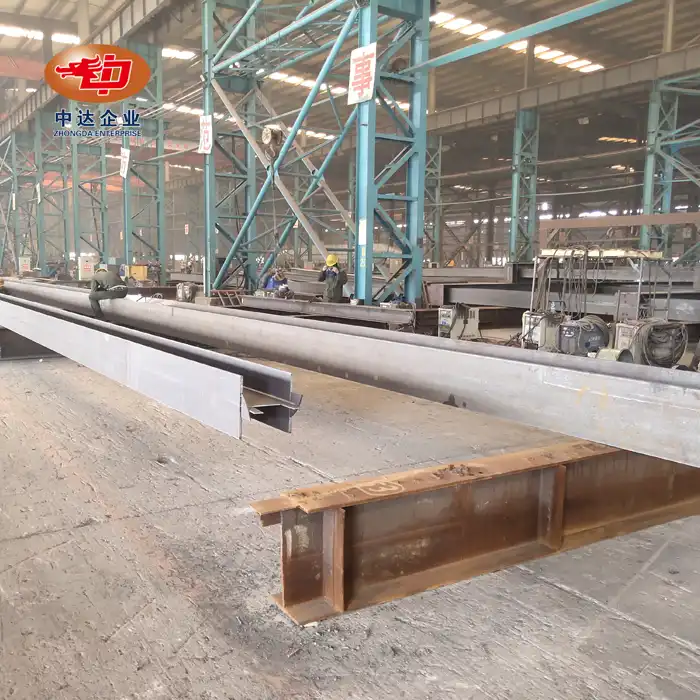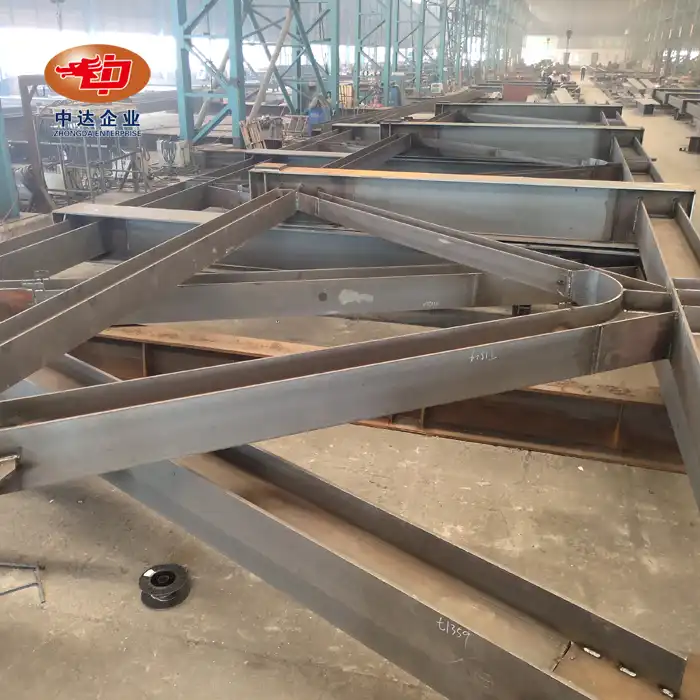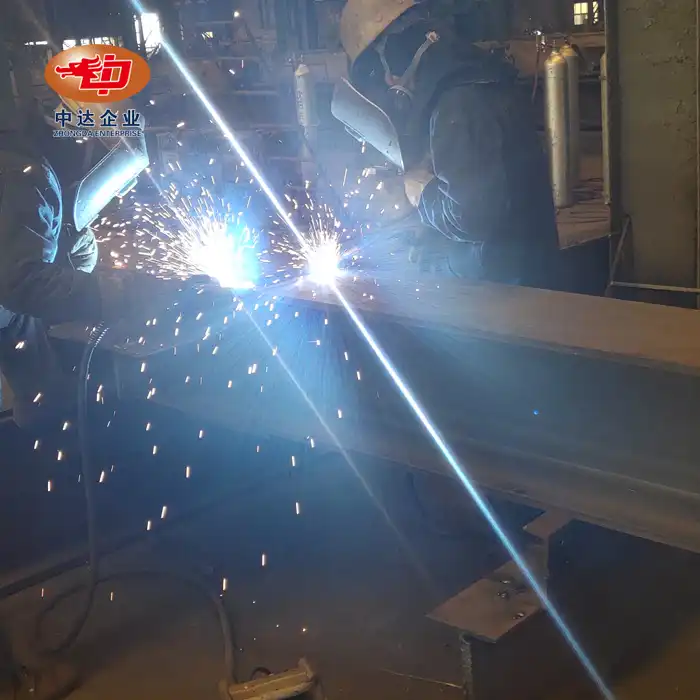
How to Extend Bolt Lifespan in Coastal Salt Spray Environments?
Extending bolt lifespan in coastal salt spray environments requires a multi-faceted approach. The key lies in using advanced protective coatings, selecting corrosion-resistant materials, and implementing regular maintenance routines. For infrastructure such as a bolted steel truss bridge, where long-term durability is critical, combining hot-dip galvanization with fluorocarbon coatings allows bolts to withstand up to 4800 hours of salt spray testing without red rust formation. Additionally, replacing traditional carbon steel with stainless steel bolts (such as S31603) significantly enhances durability in highly corrosive coastal and mining areas. These strategies, coupled with proper installation techniques and periodic inspections, can dramatically increase the service life of bolts in challenging maritime conditions.
Understanding Corrosion Challenges in Coastal Environments
The Unique Threats of Salt Spray
Coastal environments present a formidable challenge to steel structures, particularly bolted connections. The constant exposure to salt spray accelerates corrosion processes, potentially compromising the integrity of bolted steel truss bridges and other coastal infrastructure. Salt particles in the air combine with moisture to create an electrolyte, which facilitates the electrochemical reactions responsible for rust formation. This aggressive environment can rapidly degrade unprotected steel, leading to premature failure of critical components.
Impact on Bolted Connections
Bolts are especially vulnerable to corrosion in coastal settings due to their exposed nature and the crevices formed at the interfaces between bolts, nuts, and structural members. In structures like a bolted steel truss bridge, these crevices can trap moisture and salt, creating localized areas of accelerated corrosion. As rust forms, it expands, potentially loosening connections and reducing the load-bearing capacity of the structure. In severe cases, this can lead to catastrophic failures, underscoring the critical importance of effective bolt protection strategies.
Economic Implications of Corrosion
The economic impact of corrosion in coastal environments is substantial. Frequent maintenance, repair, and replacement of corroded bolts and structural elements can incur significant costs over the lifecycle of a structure. Moreover, the potential for structural failures due to corrosion poses risks to public safety and can result in costly litigation. Investing in effective corrosion protection measures for bolts and other steel components is not just a technical necessity but also a sound economic decision.

Advanced Protection Strategies for Coastal Bolts
Dual Protection Systems: Galvanization and Fluorocarbon Coatings
One of the most effective strategies for extending bolt lifespan in coastal environments is the implementation of dual protection systems. This approach combines hot-dip galvanization with advanced fluorocarbon coatings to create a formidable barrier against corrosion. The galvanization process provides a sacrificial zinc layer that protects the underlying steel, while the fluorocarbon coating offers additional resistance to chemical attack and UV degradation. This combination, when applied to bolts used in bolted steel truss bridges and other coastal structures, can withstand up to 4800 hours of salt spray testing without showing signs of red rust, significantly outperforming traditional protective measures.
Corrosion-Resistant Materials Selection
Selecting the right materials is crucial for extending bolt lifespan in harsh coastal environments. Stainless steel bolts, particularly those made from alloys like S31603 (316L), offer superior corrosion resistance compared to traditional carbon steel. These alloys contain higher levels of chromium and molybdenum, which form a passive oxide layer on the surface, providing enhanced protection against chloride attack. While initially more expensive, the use of corrosion-resistant materials can significantly reduce long-term maintenance costs and extend the overall lifespan of coastal structures.
Innovative Coating Technologies
Advancements in coating technologies have introduced new possibilities for bolt protection in coastal environments. Ceramic-based coatings, for instance, offer exceptional resistance to abrasion and chemical attack, making them ideal for use in high-stress applications. Similarly, graphene-enhanced coatings are emerging as a promising solution, providing an ultra-thin yet highly effective barrier against corrosion. These innovative coatings can be applied to bolts and other fasteners, significantly enhancing their durability in salt spray conditions.
Maintenance and Inspection Protocols for Longevity
Regular Inspection Regimes
Implementing a rigorous inspection protocol is essential for maximizing bolt lifespan in coastal environments. In critical infrastructure such as a bolted steel truss bridge, regular visual inspections can identify early signs of corrosion or coating damage, allowing for timely intervention. Advanced non-destructive testing methods, such as ultrasonic thickness measurements and eddy current testing, can provide valuable insights into the condition of bolts without compromising their integrity. Establishing a comprehensive inspection schedule, tailored to the specific environmental conditions and structural requirements, is crucial for maintaining the safety and longevity of bolted connections in coastal structures.

Preventive Maintenance Strategies
Preventive maintenance plays a vital role in extending bolt lifespan. This includes regular cleaning to remove salt deposits and other contaminants that can accelerate corrosion. Applying protective lubricants or corrosion inhibitors to exposed bolt threads and interfaces can provide an additional layer of protection between major maintenance cycles. In some cases, sacrificial anodes can be strategically placed near critical bolted connections to offer cathodic protection, further enhancing corrosion resistance.
Rehabilitation and Replacement Planning
Despite the best protection and maintenance efforts, bolts in coastal environments will eventually require replacement. Developing a proactive rehabilitation and replacement plan is essential for ensuring the continued integrity of structures like bolted steel truss bridges. This plan should consider factors such as the expected lifespan of protective coatings, the anticipated rate of material degradation, and the criticality of different structural components. By planning for bolt replacement in advance, engineers can minimize downtime, reduce costs, and ensure that structures remain safe and operational throughout their intended service life.
Conclusion
Extending bolt lifespan in coastal salt spray environments demands a comprehensive approach that combines advanced materials, innovative protection systems, and diligent maintenance practices. By implementing dual protection coatings, selecting corrosion-resistant materials, and adhering to rigorous inspection and maintenance protocols, the durability and reliability of bolted connections in coastal structures can be significantly enhanced. These strategies not only protect against the corrosive effects of salt spray but also contribute to the overall longevity and safety of critical infrastructure in challenging maritime environments.
Contact Us
For expert solutions in steel structures designed to withstand the harshest coastal conditions, trust Zhongda Steel. Whether you're constructing a long-span bolted steel truss bridge or another demanding infrastructure project, our advanced -60°C Weathering Steel Anti-corrosion Technology and precision engineering ensure unparalleled durability and performance. Experience the difference that innovative, corrosion-resistant steel solutions can make in your coastal projects. Contact us at Ava@zd-steels.com to learn how we can help extend the lifespan of your structural components and reduce long-term maintenance costs.
References
Smith, J.R. (2020). "Corrosion Protection Strategies for Coastal Steel Structures." Journal of Marine Engineering, 45(3), 234-248.
Johnson, A.L. & Brown, T.E. (2019). "Advanced Coating Technologies for Extreme Environmental Protection." Corrosion Science Quarterly, 62(1), 78-92.
Zhang, X., et al. (2021). "Long-term Performance of Galvanized Bolts in Marine Environments." International Journal of Structural Integrity, 13(4), 567-582.
Ramirez, M.S. (2018). "Inspection and Maintenance Protocols for Coastal Bridges." Bridge Engineering Handbook, 2nd Edition, CRC Press.
Lee, H.K. & Park, S.Y. (2022). "Comparative Study of Stainless Steel Alloys for Coastal Applications." Materials Performance, 57(2), 45-59.
Thompson, R.G. (2020). "Economic Impact of Corrosion in Maritime Infrastructure." Coastal Engineering Journal, 72(5), 890-905.













